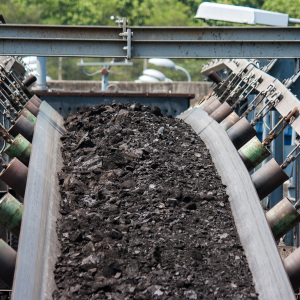As the Trump administration enters its second month, the president and Scott Pruitt are busy overhauling the Environmental Protection Agency.
With Pruitt now on the job, executive orders from the White House will soon take aim at President Barack Obama’s “Climate Action Plan,” ordering the EPA to rewrite its regulations on utilities and coal leasing and reversing the government rule that imposed federal control over private property under the “Waters of the US” rule.
The nation’s energy producers are looking forward to bringing energy to the market without the millstone of regulatory zealotry grinding them down, but it’s safe to assume the anti-Trump movement will, of course, continue to burn dumpsters in their opposition to a more balanced environmental policy.
It’s an unfortunate choice on their part: in spite of their hysterics, the consensus among industry experts is that opportunities for clean energy still abound under the new administration. If the left could put aside its visceral hatred of all things Trump, common ground could be achieved between reasonable environmentalists and free marketeers.
It is, of course, easy to understand just why the environmentalist movement is so angry. President Trump got the energy ball rolling by clearing Keystone XL and Dakota Access pipelines to be built via executive order. These “shovel ready” pipelines, backed by private interests and not tax dollars, will deliver crude to Gulf Coast refineries in Texas and set off a shale-oil renaissance and translate into jobs — landmen, pipe welders, pipeline construction firms and dozens more positions necessary in the building and maintenance of pipelines will find themselves back into the field as the ripples of this project radiate outward.
Trump’s next move was his order that two federal regulations be eliminated for every new regulation put into place. Aimed at freeing up small business, this will take the handcuffs off industry and place them on the bureaucracy. At worst (depending on your definition of worst), it will amount to a regulatory freeze.
Trump will deep six any regulation an executive department requests, and the over-regulated energy industry will benefit from loosened fetters as well. Oil refining capacity has effectively been administratively halted thanks to regulations — the last high-capacity new oil refinery was built more than four decades ago, and refining capacity has grown at a snail’s pace since then.
From the left’s perspective, the biggest stick in the eye might have been the appointment of Pruitt. A veteran fighter against the EPA, Oklahoma’s former attorney general was a party to at least 14 lawsuits pushing back against the agency’s overreach since 2011.
The response has been as predictable as it is damaging. EPA employees took the unprecedented step of protesting their own future boss and taking to the streets to air their displeasure. Then again, they at least didn’t follow the melodramatic example Greenpeace set when it trespassed on a construction crane in D.C. to unfurl a massive banner shouting “RESIST.”
In addition to “real world” protests and activities, frantic leftists have launched campaigns on social media to push back against the supposed catastrophe. Initiated by an alleged former National Park Service employee bent on giving the president a piece of his mind, an entire flock of “Alt” protest accounts based on real government agencies are still sticking it to the Donald by pushing out … climate facts.
In their righteous indignation, the left has conveniently ignored one small detail about Trump’s energy policies: when you dig a bit deeper, they aren’t that different from those of Barack Obama. The ex-president’s supporters now conveniently forget it, but Obama’s Department of Energy actually invested $7 billion on clean coal technology while Obama was in office, including $3.4 billion from the 2009 stimulus. The DOE’s National Energy Technology Laboratory spends more than $350 million each year on clean coal technology, and the department recently committed an additional $68.4 million for research into carbon capture technology. Remember: it was clean coal that candidate Trump managed to bring back, and Sean Spicer recently confirmed that the president hasn’t changed his position.
Obama knew as well as anybody that there is no axing coal from the energy mix anytime soon. His clean coal ambitions went right up to the end of his presidency: a few days before he left office, Houston saw the opening of a gargantuan new system designed to capture carbon dioxide emanated from a coal-fired power plant. In stark contrast with most other government programs, the Petra Nova project was completed on time and on budget. In addition, the cost of installation will not raise the price of electricity produced at the plant, because the trapped gas is sold to oil drillers for use in bringing crude to the surface.
As revolutionary as the Petra Nova plant is, even greater potential for clean coal is on the horizon. In India, scientists have developed a system that collects carbon dioxide from a coal-fired thermal power station and turns it into baking soda. The system is just efficient enough for it to be operated at the plant without requiring any subsidies. The upside for the all-but-dead-and-buried coal industry is incredible, and once this badly needed technology is implemented in America, there will be more than enough baking soda for celebratory cakes to go around.
Why is it, then, that the same technology Obama backed for eight years suddenly becomes a joke (or an outrage) when it’s Trump advocating it? Something like clean coal alone is a huge win for both sides — Trump can return the coal industry from the brink, while the left gets to pursue its emission targets.
Congressional Democrats could facilitate progress on these initiatives, but their base will demand they stonewall instead. The extremist wing of the Democratic Party is choosing pouting over pragmatism, and the country’s energy future will be no better for it.

